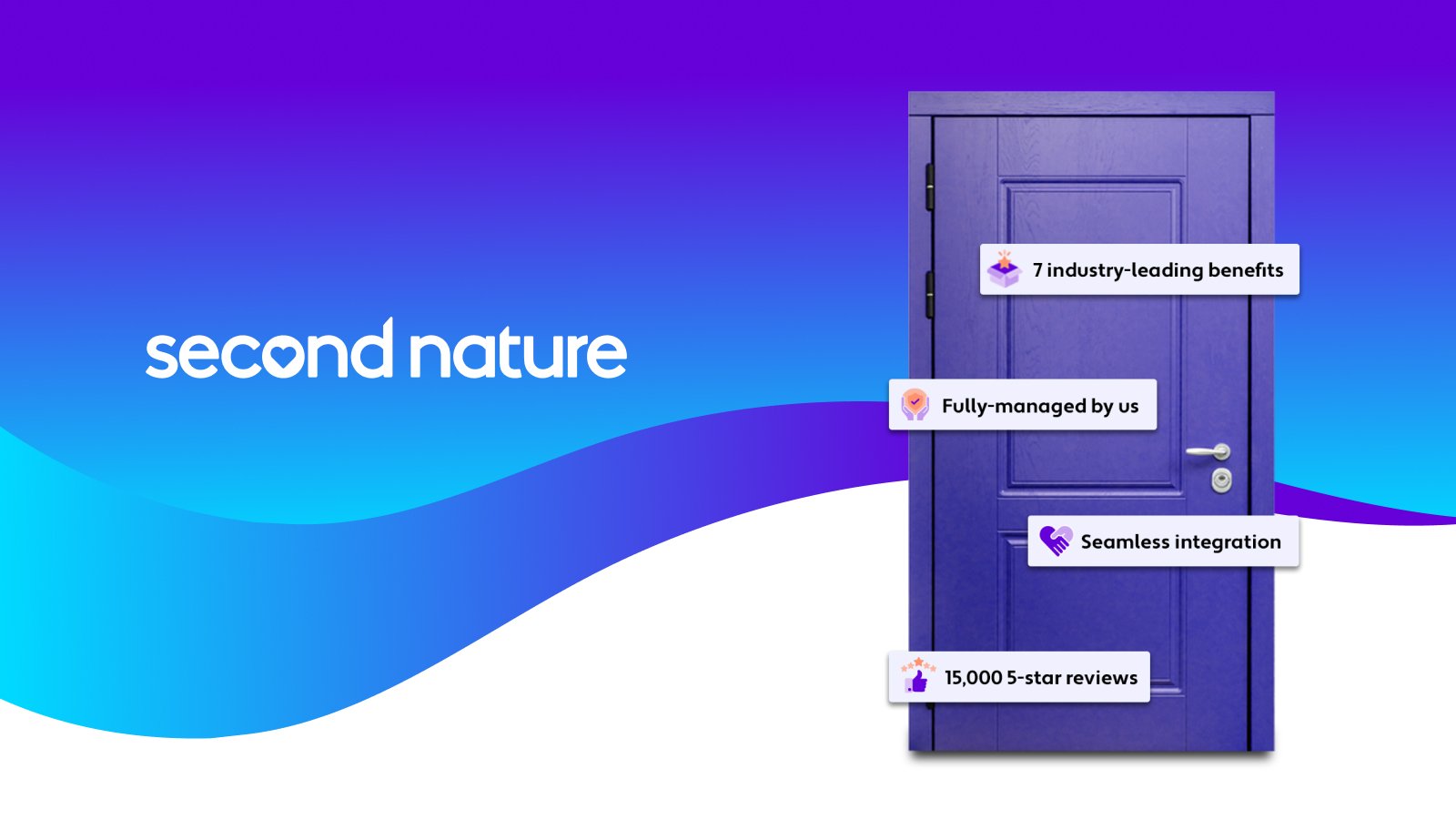What we'll cover
Optimize for local search with GoogleMyBusiness Page
Create a blog to write about the pain points of your audience
Optimize landing pages with above-the-fold CTAs
Fix site speed and user experience issues
Use your network to build backlinks naturally to the website
Share your best content on social media
Incentivize customers to get reviews on your business profile
Imagine that your prospective residents are searching for a rental property online. They'll type in terms like "houses for rent" or possibly even "property management companies near me."
The websites that appear at the top of the search results are the ones that search engines such as Google consider most relevant and useful. That's the power of SEO, or Search Engine Optimization.
This is a bit like having a big, brightly lit sign outside your office. The better optimized your property management website is, the higher it ranks in search results, increasing the chances of potential residents finding you online, which in turn increases leads, inquiries, and ultimately revenue.
A well-executed SEO strategy can also help you save costs in other property management marketing areas, as well as boosting your brand's credibility (ranking well in Google search results helps instill trust in potential residents).
Now, if you talk to an SEO consultant, odds are good that they'll present a laundry list of recommendations that include references to such terms as "long-tail keywords," "SERPS," "meta descriptions," and “alt tags,” which may not mean much to you.
The good news is that you really don't need a lot of technical expertise to significantly improve your online visibility, rank well in search engine results pages, and attract more potential tenants.
In fact, a bit of focused marketing effort is generally all it takes to boost your website ranking, and possibly end up on the first page of organic search results, depending on the competitiveness of your local market
We'll guide you through some tactical tips you can use to successfully build your SEO ranking step by step.
Optimize for local search with GoogleMyBusiness Page
Setting up a location-specific Business Profile on Google is free, and boosts your chances of appearing in local searches for property management services. Think of this “local SEO” as a digital storefront that helps potential leads easily find accurate and useful information about your property management business.
Here's how to optimize your Google My Business (GMB) page for local search:
- Claim and verify your business listing
Start by claiming your GMB profile: Search for your company on Google Maps. If it already exists, claim it. If not, create a new listing.
Google might send a postcard, phone call, or email with a code to verify. Verification is crucial, as it proves you're the rightful owner of your business listing. - Complete your profile in detail
- Company name: Use only your official business name, with no additional keywords.
- Address and phone number: These must match how they appear on your website and across other online listings.
- Category: Choose the most accurate primary category, like "Property Management Company." You can add additional categories if they are relevant.
- Hours of operation: Keep these updated, including special hours or holiday closures.
- Website and photos: Add your website link and high-quality photos of your properties, office, and team. - Complete your "From the Business" description
Briefly explain what your company does, the areas you serve, and what makes you unique.
Include keywords related to property management and your location, like "[City name] property management" or "rental properties in [neighborhood]". - Encourage and respond to reviews
Positive reviews with keywords boost your ranking. Ask satisfied tenants to leave reviews.
It's best to address both positive and negative reviews professionally and promptly, as this demonstrates your commitment to customer service. - Share updates
Promote new listings, community events, special offers, or company news in Google Posts. Include links to your website or booking forms to increase leads and website traffic.
Remember that regularly updating your GMB profile indicates that your business is active, boosting search rankings.
2. Create a blog to write about the pain points of your audience
A blog is a lot like having a knowledgeable property manager available 24/7 to answer questions and guide potential tenants. This kind of website content is also an ideal way to promote a brand of openness and transparency, which is critical for building "Triple Win" conditions. At Second Nature, we often refer to these conditions in the context of a business philosophy that benefits property managers, residents, and property owners alike.
From an SEO perspective, a blog helps attract more search traffic, since each blog post will focus on relevant keywords and specific phrases that potential clients might be searching for, like "tips for first-time renters in [your city]" or "how to prepare your apartment for a move-out inspection."
In this vein, you may find it helpful to conduct some keyword research to find out what kind of information is truly useful to your market, but resist “keyword stuffing” in the name of organic traffic gains and lead generation. Sincere content is good content and vice versa.
A blog gives you a platform to regularly add fresh, relevant content (this is a ranking factor that Google has always loved), and establishes you as an authority on issues that are of concern to your target audience, such as maintenance tips, tenant laws, the local rental market, and more.
Blog posts also allow you to naturally link to other relevant pages on your website, improving navigation and helping users find what they need.
3. Optimize landing pages with above-the-fold CTAs
Any time you direct prospects to a key page on your website, the "above-the-fold" area is like the prime display area - it's what visitors see the moment they enter the room, without needing to scroll down.
A CTA (call to action) is your eye-catching sales pitch. These days, it's usually a button yelling "Schedule a viewing!" or "Get a demo!"
So why does this kind of on-page SEO matter? Search engines like Google love websites that provide a good user experience. A prominent CTA makes it super easy for visitors to take the next step and shows search engines they found what they were looking for.
Plus, when someone who’s interested in your services can easily find ways to contact you or learn more, you're more likely to turn them from a casual browser into a potential tenant. Search engines notice that, too.
4. Fix site speed and user experience issues
If your website was a rental property, site speed is like the time it takes a resident to find their home and get inside. A website that’s afflicted by pages with slow loading times is like a hidden property with a rusted-out lock – potential residents get frustrated and leave.
When we're talking about user experience, we're really talking about how easy it is for them to find what they need once they're inside. If your website is confusing or has broken features, it's like an apartment with leaky pipes and no furniture – residents won't want to stay.
If people land on your site and quickly leave (this is called "bouncing"), it tells the Google algorithm that your site might not be useful or relevant, harming your rankings.
The longer people stay on your site, clicking around and checking out different listings, the better signal it sends to Google that your site is providing value.
5. Use your network to build backlinks naturally to the website
Backlinks are links from other websites pointing back to your own website.
High-quality backlinks from relevant websites within your network tell search engines that you're a trusted and authoritative source of information in your industry. This kind of “link building” can boost your search engine rankings and help more potential leads easily find your property management services online. Note that poor-quality backlinks can hurt your reputation, so it’s worth keeping tabs on the sites that are linking back to yours.
There are a few different ways to use your network to build natural backlinks.
-
If you sponsor a community event or partner with a local business, see if they'd link to your website on their event page or partner section.
-
Offer to write a helpful article for a local real estate blog or community website in exchange for a link back to your website.
-
If you're a member of an industry association or listed on reputable directories, make sure those websites link back to yours.
Backlinks from relevant websites are one of the metrics that tell search engines you're a trusted and authoritative source of information in your industry, and help boost your search engine results.
6. Share your best content on social media
Social media is a key part of any modern digital marketing strategy. After all, any time someone likes, shares, or comments on your social posts, it helps spread the word about your company.
Sharing interesting articles, local news, or industry news helps boost your online presence and build your reputation as an engaged and knowledgeable property management company.
Now, social media won't directly boost your search rankings overnight. In fact, it's a very long-term play. But it's a great way to build your reputation as a helpful resource and increase interest in your services, which indirectly helps your SEO efforts in the long run.
7. Incentivize customers to get reviews on your business profile
Search engines like Google value websites with lots of positive, recent reviews. It shows your business is active, trustworthy, and provides a good experience. Essentially, they're online testimonials that tell Google your business deserves a top spot in search results.
And the more good reviews your company has, the more likely you are to show up higher in search results for things like "property management near me."
Plus, there is such a thing as actual star power: A high star rating next to your business name in search results acts like a magnet, attracting more searchers, clicks, and potential customers to your website.
To incentivize reviews, you can simply make a polite request after a successful move-in or a resolved issue. You can also offer small discounts for future services (so long as this complies with applicable business regulations).
Looking for more business insights from the Second Nature team? Get in touch, or stay tuned to our blog, podcast, and events.
Topics:



